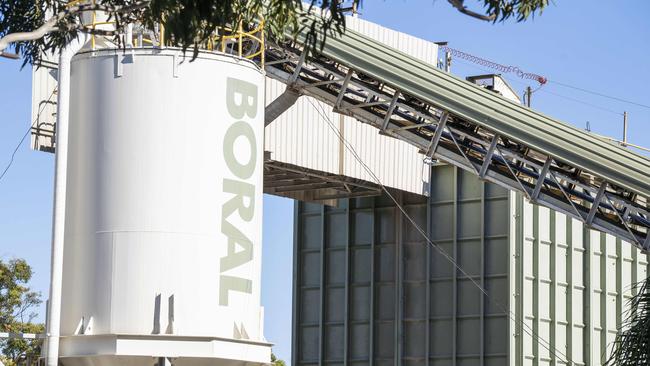Australian stocks gain 7.8pc in 2023 after best December in 30 years
As investors bank on aggressive rate cuts next year, the Australian sharemarket ended the year 7.8 per cent higher after the best December rally in three decades.
The Australian sharemarket ended the year 7.8 per cent higher, the biggest jump since the pandemic era returns of 2021, driven by gains in big iron ore miners and banks as investors hope for aggressive rate cuts next year.
Biotech Neuren Pharmaceuticals was by far the best performer among the top 200 listed companies, with its shares tripling to $25 each, driven by sales of its blockbuster Rett syndrome drug.
At the other end, lithium miner Core Lithium was the biggest loser among 78 companies ending the year in the red, as a slowdown in the adoption of electric vehicles drove sharp price declines in the commodity this year.

The S&P/ASX 200 index closed slightly lower at 7590.8 on Friday, the last trading day of the year. That was not enough, however, to spoil accumulated monthly gains of 7.1 per cent, the best December rally in three decades.
“It’s extraordinary,” Jason Beddow, managing director of Argo Investments, said.
“There’s been lots of short covering, there’s been lots of people deploying cash. Seems like there’s no sellers around – the market is just reaping.”
The monthly gains are also the best since November 2020, when the benchmark jumped 9.9 per cent, and represent the biggest December rally since the 8.2 per cent gains of December 1993.
The end of year bonanza capped a very volatile 2023, and reversed last year’s 5.4 per cent loss. The benchmark had fallen 6 per cent in the five months to the end of October, as the 10-year yield in US Treasurys crossed the 5 per cent mark, reflecting the market view that interest rates would probably be higher for longer.
But a dovish pivot from the Federal Reserve drove US 10-year bond yields back to 3.8 per cent, with markets now pricing at least six interest rate cuts in the US and two or three in Australia.
“The moves have been extraordinary,” Mr Beddow said. “Over the last 10 weeks of the year there were still downgrades to earnings in the Aussie market, yet the market keeps rallying. So it’s a PE re-rate, rather than earnings growth, excluding the iron ore miners,” he said.

Iron ore mining giant BHP (up 10.4 per cent), the nation’s biggest lender, Commonwealth Bank (up 8.9 per cent), and Fortescue Metals (up 41 per cent) – all of which reached record highs on Thursday – were the top contributors of the index gains, although all sectors ended the year higher.
At the sector level, materials, financials and consumer discretionary were the top ASX 200 contributors, booking returns of 16.8 per cent, 11.9 per cent, and 22.6 per cent respectively, according to Bloomberg data.
Index contributions depend on their weighting, with larger companies and sectors usually having the largest impact.
The artificial intelligence wave fueled a 43 per cent return in the technology sector.
While the healthcare care sector was the fourth largest contributor to the index, gaining 3.8 per cent in the year.
The top gainer, Neuren, this year started selling its blockbuster drug Daybue, the first approved treatment for Rett syndrome, a rare genetic disorder and developmental affliction in very young children.
The Australian’s DataRoom column in November reported that Neuren had received buyer interest from US-based industry giants, and had appointed investment bankers to defend it from a takeover approach.
It has rallied 70 per cent since then.
Gold miner Emerald Resources was the second largest winner, another stock buoyed by the potential M&A activity this year.
Its shares more than doubled to $3 as Chinese suitors became interested in the company’s developments in Cambodia.

Building materials group James Hardie ended the year 114 per cent higher at $56.49 per share.
The stock lost 52 per cent in 2022, due to expected housing downturns in the US amid rising interest rates. But with traders now forecasting aggressive interest rate cuts by central banks in the US and Australia, the stock price is near its record high of $57.30, which it reached in August 2021.
Rounding out the top five winners of 2023 are uranium company Boss Energy, up 90 per cent, and building materials group Boral with an 86 per cent gain.
Ramelius Resources, Seven Group Holdings, Pro Medicus, Smartgroup Corp, and Collins Foods also did well.
Among the losers, critical minerals miner Chalice Mining lost 73 per cent as short sellers piled in, following disappointing scoping results from its Gonneville project in Western Australia. Beleaguered casino operator Star Entertainment had its second consecutive year of sharemarket losses, with shares ending the year two-thirds lower at 51c.
Lithium supplier Sayona Mining, healthcare group Healius, bauxite miner Alumina, dairy giant A2 Milk, nickel and lithium producer IGO, mineral sands miner Iluka Resources and wealth manager Insignia Financial rounded out the top losers in 2023.








To join the conversation, please log in. Don't have an account? Register
Join the conversation, you are commenting as Logout